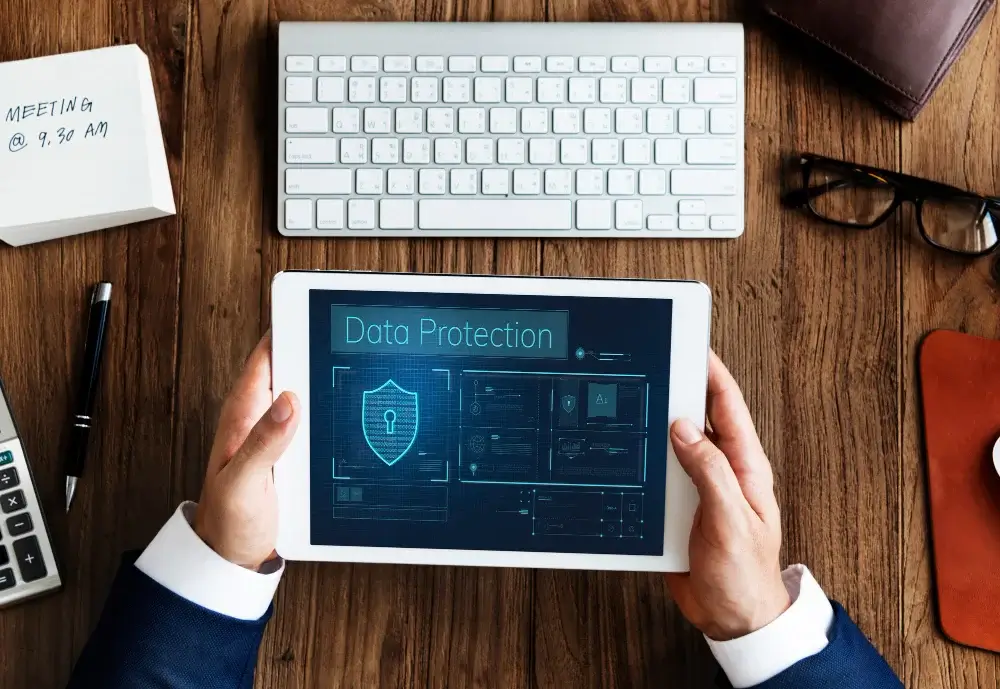Cyber-security in the Digital Age: Protecting Data and Systems from Cyber Threats

In today’s digital era, technology seamlessly integrates into every facet of our lives, from online transactions and social interactions to healthcare management. However, this increased reliance on technology goes hand in hand with a surge in cyber threats. These threats range from unauthorized access to complete system disruptions, posing substantial financial and reputational risks. As our world becomes more digitally connected, cybersecurity emerges as a pivotal concern for individuals, businesses, and governments. This article delves into the significance of cybersecurity in the contemporary digital landscape and explores effective measures to shield data and systems from evolving cyber threats.
Navigating the Shifting Cyber Landscape
In the face of rapid technological advancements and escalating dependence on digital platforms, understanding the dynamic cyber landscape becomes paramount. In our interconnected world, cybercriminals continuously exploit vulnerabilities, necessitating a proactive approach to cybersecurity. Traditional security measures are no longer adequate; staying abreast of emerging technologies and evolving attack vectors is essential. By monitoring and analyzing the cyber landscape, organizations can adapt their security strategies, mitigating risks in the ever-evolving digital age.
Securing the Foundation: The Importance of a Robust Network Infrastructure
In the digital realm, a secure network infrastructure forms the bedrock for safeguarding against cyber threats. Without a resilient network architecture, organizations expose themselves to security breaches, including unauthorized access, data breaches, and malware attacks. A secure network infrastructure encompasses diverse measures such as firewalls, intrusion detection systems, encryption protocols, and regular security audits. Implementing and maintaining such measures significantly reduces the risk of cyber-attacks, ensuring the confidentiality, integrity, and availability of critical data and systems.
Fortifying Security with Multi-factor Authentication
Enhancing data and system security requires the implementation of multi-factor authentication measures. This additional layer of protection demands users provide multiple forms of verification, adding complexity beyond traditional passwords. Incorporating elements like something users know, have, or are, multi-factor authentication substantially reduces the risk of unauthorized access, even if passwords are compromised. Educating employees about the importance of multi-factor authentication and encouraging best practices further strengthens these measures against cyber threats in the digital landscape.
The Vital Role of Regular Software and System Updates
Maintaining robust cybersecurity hinges on regularly updating software and systems. Up-to-date software ensures organizations have the latest security patches, bug fixes, and enhancements, guarding against emerging cyber threats. Neglecting updates can expose systems to known exploits, heightening the risk of unauthorized access and data breaches. Additionally, regular updates enable organizations to leverage new features, enhancing productivity and efficiency. Prioritizing consistent software updates and system maintenance proactively reinforces defenses against cyber threats.
Empowering the First Line of Defense: Employee Cybersecurity Education
Establishing a comprehensive cybersecurity framework demands prioritizing employee education on cyber threats. Employees serve as the frontline defense against cyber attacks, and their actions significantly impact organizational security. Regular training and awareness programs empower employees to recognize common cyber threats like phishing, malware, and social engineering tactics. Educating employees on the potential consequences of cyber attacks fosters a culture of responsibility and vigilance. This proactive approach reduces the risk of potential cyber threats in the digital age.
Proactive Measures: Vulnerability Assessments and Audits
Ensuring ongoing cybersecurity effectiveness necessitates regular vulnerability assessments and audits. These systematic evaluations identify and evaluate potential vulnerabilities in an organization’s systems, networks, and applications. Thorough vulnerability assessments allow organizations to address weak points before they can be exploited by cyber attackers. Regular audits provide a comprehensive review of cybersecurity controls and practices, ensuring alignment with industry standards and best practices. By gaining insights through assessments and audits, organizations can make informed decisions to continually enhance their defenses against evolving cyber threats.
Safeguarding Against Data Loss: Establishing Robust Backup Procedures
In the contemporary digital landscape, robust data backup procedures are a critical component of any cybersecurity strategy. Data loss can occur due to various reasons, including hardware failure, human error, or malicious attacks. Well-defined backup procedures minimize the risk of losing valuable data and ensure availability in case of an incident. Regularly backing up critical and non-critical data, considering factors like data retention requirements and storage capacity, is essential. Implementing a combination of on-site and off-site backups enhances resilience against physical disasters or localized incidents. Conducting periodic tests and validations ensures the effectiveness and reliability of backup systems and processes.
Fortifying Sensitive Data: Utilizing Encryption Techniques
To enhance the protection of sensitive data, organizations should consider employing encryption techniques. Encryption transforms data into a format accessible only with an authorized decryption key. Applying encryption to customer data, financial records, or proprietary files adds an extra layer of security, rendering the data useless to unauthorized individuals even if intercepted. Encryption can be applied to various levels of data storage, including databases, file systems, and communication channels. Incorporating strong encryption algorithms and regularly updating encryption keys ensures the integrity and confidentiality of sensitive data. By integrating encryption into cybersecurity strategies, organizations significantly reduce the risk of unauthorized access or data breaches, maintaining the trust of stakeholders.
Collaborative Commitment to Cybersecurity
In today’s digital age, prioritizing cybersecurity is imperative to safeguard our data and systems from cyber threats. With the surge in remote work and technological reliance, individuals and organizations must prioritize strong security measures. From regular software updates to employee education on safe online practices, various steps can fortify defenses against cyber attacks. By remaining proactive and vigilant, we can collectively prevent and mitigate the potentially devastating consequences of cyber threats. Let us unite in our commitment to prioritize cybersecurity and protect our digital world.
